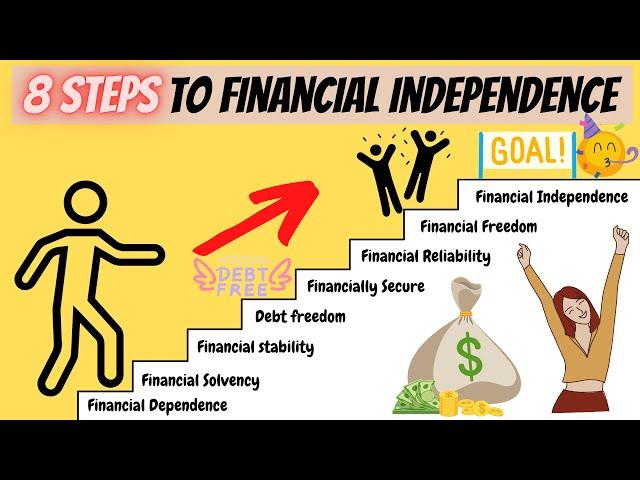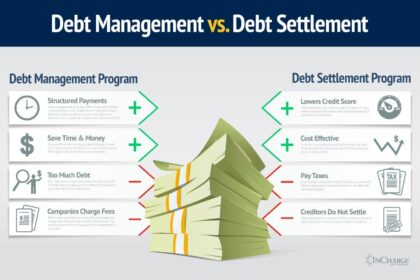In a world driven by relentless consumerism and ever-increasing expenses, the pursuit of financial independence has become both a dream and a necessity for many. Imagine waking up each day not to the sound of an alarm clock set for the office, but to the gentle hum of freedom—a life where choices are dictated by passion rather than paycheck. Financial independence is not just a financial goal; it’s a transformative journey that empowers individuals to take control of their lives, redefine their priorities, and create a life that resonates with their true values. In this article, we will explore the principles of achieving financial independence, the practical steps involved, and the profound psychological shifts that accompany this liberating state of being. Whether you’re just starting to think about your financial future or are well on your way to liberation, this exploration will provide insights and inspiration for anyone looking to break free from the chains of financial uncertainty.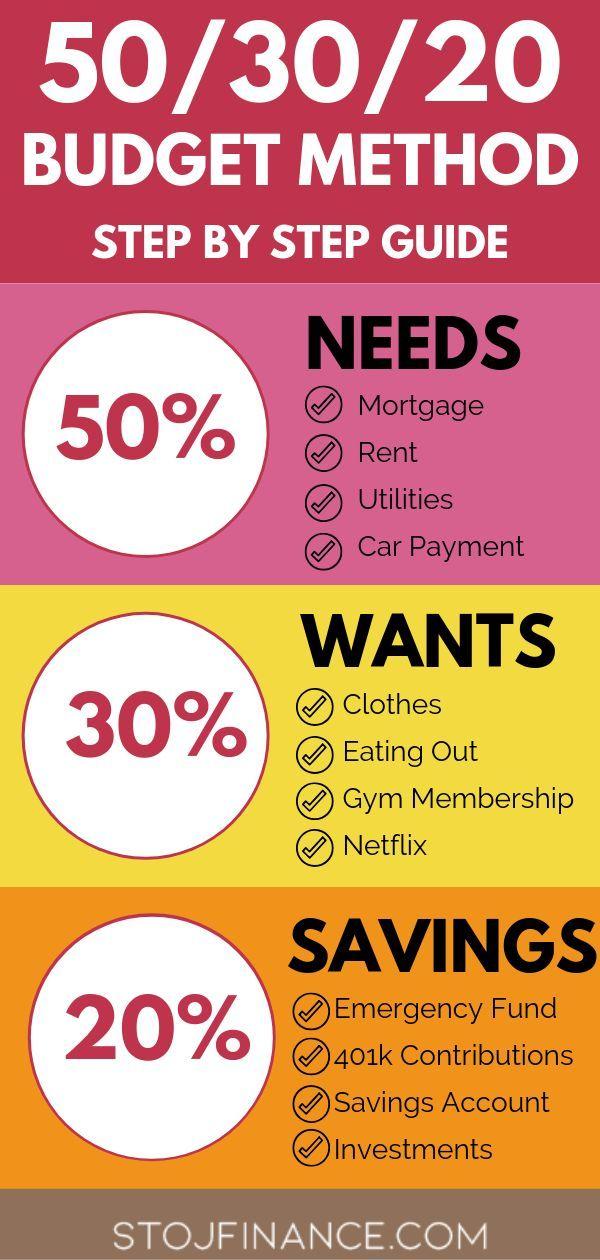
Budgeting Tips
Creating a solid budget is the cornerstone of achieving financial independence. Start by tracking your income and expenses meticulously. This involves not just jotting down your earnings but categorizing your expenses into fixed and variable. Fixed expenses include rent or mortgage, insurance, and utilities, while variable expenses encompass groceries, entertainment, and personal spending. By identifying these categories, you can see where your money is flowing and pinpoint areas for savings. Consider using budgeting apps or spreadsheet tools to simplify this process and enhance accuracy.
Once you’ve laid out your financial landscape, establish clear goals. Aim for a balanced approach where you allocate funds to essential living costs, savings, and discretionary spending. A simple formula to follow is the 50/30/20 rule: allocate 50% of your income to needs, 30% to wants, and 20% to savings or debt repayment. Here’s a simple illustration of how your monthly budget could look:
| Category | Percentage | Example Amount ($) |
|---|---|---|
| Needs | 50% | 1,500 |
| Wants | 30% | 900 |
| Savings/Debt Repayment | 20% | 600 |

Debt Management
When on the journey to financial independence, effective management of debt is crucial. Understanding your debt, including the interest rates and terms of each obligation, can empower you to create a strategic repayment plan. With careful budgeting, you can prioritize your debts and focus on paying off those with the highest interest rates first. Consider the following methods to enhance your strategy:
- Create a budget: Allocate a portion of your income to debt repayment.
- Utilize the snowball method: Pay off smaller debts first to gain momentum.
- Negotiate with creditors: Seek lower interest rates or more favorable terms.
Another effective approach is to consolidate your debts, which can simplify your financial obligations and potentially lower your interest rates. By consolidating, you can combine multiple debts into a single loan, making it easier to manage monthly payments. Below is a simple comparison of potential debt consolidation options:
| Option | Benefits | Considerations |
|---|---|---|
| Balance Transfer Credit Card | Low or 0% introductory APR | High fees if not paid in time |
| Personal Loan | Fixed interest rate and payment | Requires good credit for best rates |
| Home Equity Loan | Lower interest rates | Risk of losing your home |

Saving for Retirement
Preparing for the golden years of retirement is a journey that requires foresight and planning. One of the most effective ways to ensure a comfortable future is by consistently setting aside funds that will work for you when the time comes. To make this process easier and more enjoyable, consider adopting the following strategies:
- Start Early: The sooner you begin saving, the more time your money has to grow through compound interest.
- Automate Your Savings: Consider setting up automatic transfers to your retirement account; this ‘pay yourself first’ method ensures you save before spending.
- Diversify Investments: Explore a mix of stocks, bonds, and other investment vehicles to balance risk and reward effectively.
Additionally, it is essential to monitor and adjust your savings plan over time. Regularly assess your financial goals, taking into account changes in your lifestyle or unexpected expenses. Below is a simple table to illustrate a potential growth model over time for your retirement savings:
| Years | Annual Contribution | Total Savings (Assuming 6% Interest) |
|---|---|---|
| 10 | $5,000 | $69,481 |
| 20 | $5,000 | $176,489 |
| 30 | $5,000 | $409,270 |
By focusing on disciplined saving and strategic investment, you can build a financial cushion that supports your aspirations during retirement. Embrace the journey toward financial independence, and you’ll find that every dollar saved today brings you one step closer to a worry-free tomorrow.

Emergency Fund Planning
Building a robust safety net is a cornerstone of sound financial management. An emergency fund serves as a vital buffer against unexpected expenses, safeguarding you from the financial blow of unforeseen circumstances such as medical emergencies, car repairs, or sudden job loss. Ideally, your emergency fund should cover three to six months of living expenses. This ensures that you can navigate through crises without derailing your overall financial trajectory. Here are some key considerations for establishing your fund:
- Decide on the amount: Calculate your essential monthly expenses to determine your target fund size.
- Choose a high-yield savings account: Opt for an account that offers better interest rates than regular savings accounts.
- Start small: If saving enough to cover multiple months feels daunting, begin with a small, manageable goal and increase it gradually.
Once you’ve set up your emergency fund, it’s essential to maintain and replenish it as needed. Unexpected events don’t wait, so creating a habit of regularly reviewing and funding your emergency savings can mitigate future stress. Consider setting up automatic transfers from your checking account to your emergency fund to streamline the process. Additionally, analyzing your budget can help you identify extra funds that can be allocated towards your emergency savings. Evaluate these expenses:
| Expense Type | Monthly Amount | Potential Savings |
|---|---|---|
| Dining Out | $250 | $100 |
| Subscription Services | $75 | $25 |
| Cable TV | $100 | $50 |
By recognizing areas where you can cut back, you can swiftly increase your emergency fund while fostering wise budgeting habits that contribute to your overall financial independence.

Investment Strategies
Achieving financial independence often hinges on the you choose to adopt. Each strategy has its own risk-reward profile, and understanding these can empower you to make educated decisions. Consider these key approaches:
- Index Fund Investing: By investing in a diverse range of stocks through index funds, you can reduce volatility and achieve long-term growth.
- Real Estate Crowdfunding: This allows you to invest in real estate projects without the hassle of managing properties directly.
- Dollar-Cost Averaging: Investing a fixed amount regularly can mitigate market timing risk and contribute to steady portfolio growth.
While the above strategies offer solid pathways to build wealth, it’s important to evaluate all potential avenues. Here’s a quick comparison of investment types:
| Investment Type | Risk Level | Time Horizon |
|---|---|---|
| Stocks | High | Long-term |
| Bonds | Low to Moderate | Medium-term |
| Real Estate | Moderate | Long-term |
| Mutual Funds | Moderate | Long-term |

Stock Market Investing
Investing in the stock market is one of the most powerful tools available for achieving financial independence. It allows individuals to grow their wealth over time, harnessing the power of compounding interest and market appreciation. By investing in stocks, you stake a claim in the ownership of dynamic, innovative companies that drive economic growth. When navigating the stock market, consider these essential strategies:
- Diversification: Spread your investments across various sectors to mitigate risk.
- Long-term focus: Invest with a timeframe of five years or more to weather market fluctuations.
- Continuous learning: Stay informed about market trends, economic indicators, and individual company performance.
Understanding key metrics and market indicators can significantly enhance your investment decisions. A solid grasp of these elements will empower you to analyze stocks effectively and make informed choices. Below is a simple overview of important stock metrics:
| Metric | Description |
|---|---|
| P/E Ratio | Price-to-Earnings ratio; indicates valuation. |
| Dividend Yield | Annual dividend payment divided by stock price; shows income potential. |
| Market Capitalization | Total market value of a company’s outstanding shares. |

Real Estate Investment
Investing in real estate can serve as a powerful pathway to achieving financial independence. By strategically acquiring rental properties, investors can create a steady stream of passive income, allowing them to break free from the conventional 9-to-5 grind. Key benefits of include:
- Cash Flow: Monthly rental income can provide a consistent cash flow.
- Appreciation: Properties often increase in value over time, building equity.
- Tax Advantages: Various deductions can lower taxable income.
To succeed in real estate, it is essential to approach the market with knowledge and diligence. Conducting thorough research, understanding market trends, and analyzing investment options can mean the difference between profit and loss. Consider using a simple strategy to assess potential investments:
| Criteria | Considerations |
|---|---|
| Location | Look for areas with growing demand and potential development. |
| Property Type | Residential, commercial, or mixed-use investments can yield different returns. |
| Financing Options | Evaluate mortgages, partnerships, and other financing strategies. |
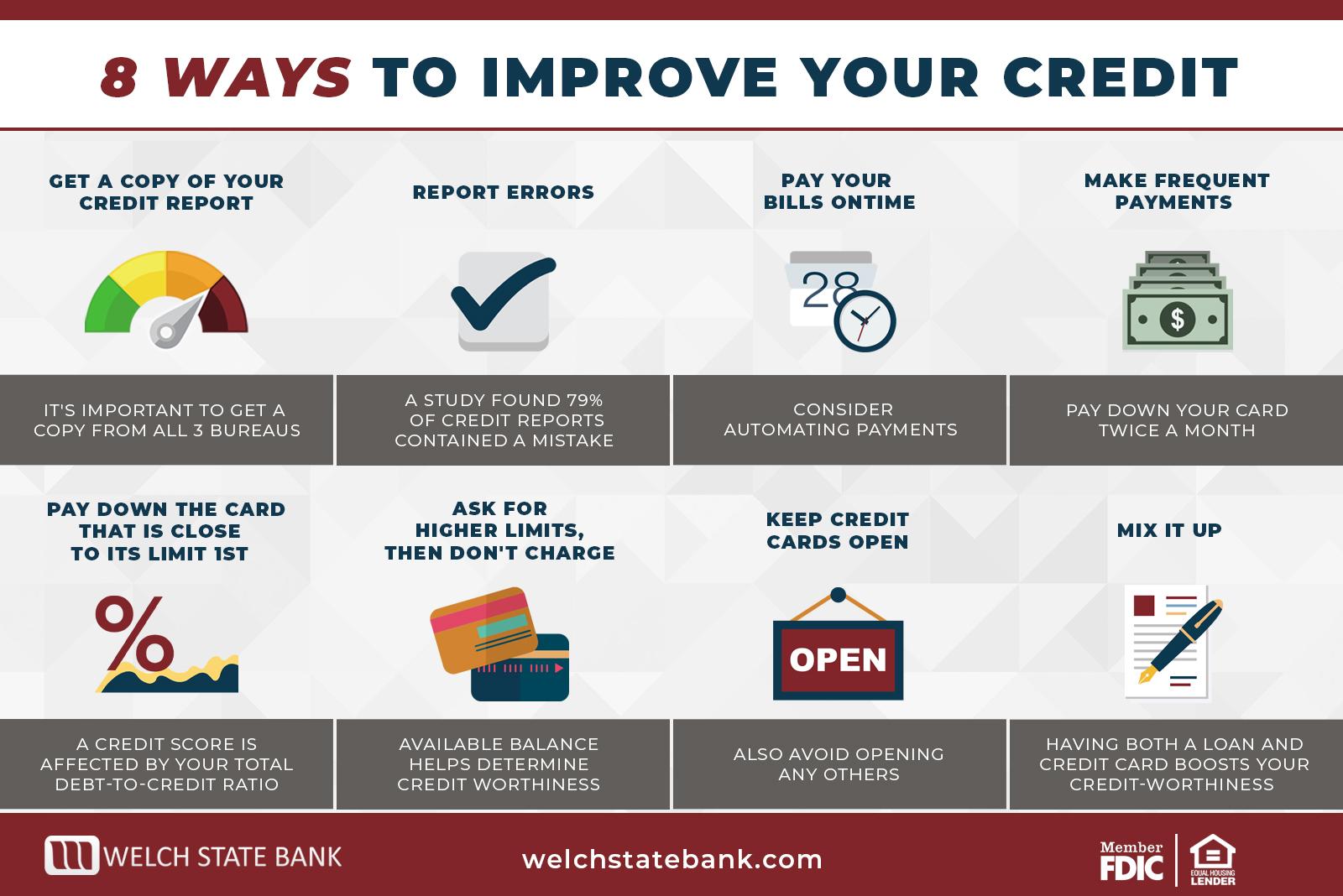
Credit Score Improvement
Improving your credit score is a pivotal step on the path to financial independence. A robust credit score opens doors to better loan terms, lower interest rates, and increased approval odds for credit applications. Here are several strategies to enhance your score:
- Pay Bills on Time: Consistent, timely payments are crucial for a healthy credit history.
- Reduce Debt: Aim to lower your credit card balances as it influences your credit utilization ratio.
- Limit New Credit Requests: Each application can ding your score, so be judicious about when and how often you apply.
- Monitor Your Credit Report: Regular checks can help you spot inaccuracies and potential fraud early.
It’s essential to understand how scores are calculated. Here’s a simplified breakdown of the key components:
| Component | Percentage of Score |
|---|---|
| Payment History | 35% |
| Credit Utilization | 30% |
| Length of Credit History | 15% |
| Types of Credit | 10% |
| New Credit | 10% |

Financial Independence
is the ultimate goal for many individuals seeking freedom from the constraints of traditional employment. Achieving this state allows a person to live life on their own terms, making choices driven by passion rather than obligation. To embark on this transformative journey, consider the following key principles:
- Budgeting: Understanding and managing your expenses is crucial. Create a budget that reflects your priorities and tracks your spending.
- Investing: Grow your wealth through strategic investments. Explore stocks, bonds, and mutual funds to build a diverse portfolio.
- Passive Income: Seek opportunities to earn money without active involvement, such as rental properties or dividends from shares.
- Emergency Fund: Establish a safety net to protect against unexpected expenses, ensuring your financial plan remains intact.
- Financial Education: Continuously educate yourself about financial management and investment strategies to make informed decisions.
To visualize your journey towards , consider setting clear, measurable goals along your path. Below is a simple framework to help you outline your objectives:
| Goal | Target Amount | Timeline |
|---|---|---|
| Emergency Fund | $10,000 | 12 months |
| Investment Portfolio | $50,000 | 5 years |
| Debt Payoff | $20,000 | 3 years |
With careful planning and dedication, anyone can pave their way to a financially independent future, unlocking the ability to pursue dreams and passions without the weight of financial stress.

Passive Income Streams
Building multiple streams of income is a fundamental step towards achieving financial independence. Among the different avenues available, require initial effort but continue to generate revenue with minimal ongoing involvement. Consider the following options for diversifying your income:
- Real Estate Investments: Buy rental properties or invest in real estate crowdfunding platforms.
- Dividend Stocks: Invest in companies that consistently pay dividends, providing a regular income.
- Peer-to-Peer Lending: Join lending platforms to earn interest from individual loans.
- Digital Products: Create e-books, online courses, or stock photos that can be sold repeatedly without extra effort.
To better visualize the potential income from these streams, consider this simple comparison:
| Income Stream | Initial Investment | Monthly Passive Income |
|---|---|---|
| Real Estate | $50,000 | $1,000 |
| Dividend Stocks | $10,000 | $50 |
| Peer-to-Peer Lending | $5,000 | $30 |
| Digital Products | $200 | $300 |
By exploring these avenues, you create a financial cushion that allows you to pursue your passions without the constraints of traditional employment. Remember, the goal is to work smarter, not harder, leading to sustainable income that empowers your financial journey.

Tax Planning
Effective financial independence hinges on the ability to manage taxes wisely. is not merely a year-end chore but a strategic approach that needs continuous development throughout the year. This requires understanding your income sources, keeping track of potential deductions, and maximizing tax-advantaged accounts. By utilizing available credits and putting money into tax-free accounts like IRAs or Health Savings Accounts (HSAs), you can significantly reduce your tax liability, allowing you to keep more of your hard-earned money. Consider establishing an annual budgeting process that incorporates these elements to ensure that you optimize your tax situation consistently.
To illustrate the power of informed tax decisions, consider the following table highlighting common tax-advantaged accounts:
| Account Type | Key Benefits | Contribution Limits (2023) |
|---|---|---|
| Traditional IRA | Tax-deductible contributions; tax-deferred growth | $6,500 (under 50), $7,500 (50+) |
| Roth IRA | Tax-free withdrawals in retirement; flexible withdrawal rules | $6,500 (under 50), $7,500 (50+) |
| 401(k) | Employer match potential; tax-deferred growth | $22,500 (under 50), $30,000 (50+) |
| Health Savings Account (HSA) | Triple tax advantage; qualified medical expenses tax-free | $3,850 (individual), $7,750 (family) |
Implementing tax strategies like these not only aids in achieving financial independence but also fosters a clear path to wealth accumulation. Staying updated on tax regulations and seeking professional advice when necessary can further enhance your planning. By prioritizing thoughtful tax strategies alongside your overall financial goals, you can transform tax liabilities into opportunities that propel you toward your vision of independence and stability.

Retirement Accounts (IRA, 401k)
When it comes to achieving financial independence, understanding retirement accounts is essential. Tools like IRAs and 401(k)s serve not only as pathways for retirement savings but also as strategic vehicles for long-term wealth accumulation. These accounts offer tax advantages that can significantly improve one’s financial outlook over time. Key features of these plans include:
- Tax Deferral: Contributions may reduce taxable income.
- Employer Match: Some 401(k) plans offer matching contributions, effectively giving you free money.
- Investment Options: Diverse options, from stocks and bonds to mutual funds, allow for tailored asset allocation.
To better illustrate the differences between these two popular retirement accounts, here’s a simple comparison that highlights their key attributes:
| Feature | IRA | 401(k) |
|---|---|---|
| Contribution Limit | $6,500 (2023) | $22,500 (2023) |
| Employer Contribution | No | Yes |
| Withdrawal Rules | More flexible | Less flexible |
By utilizing these retirement accounts wisely, individuals can build a robust nest egg that not only supports their future selves but also sets a foundation for financial stability. It’s about leveraging the benefits of each account to create a comprehensive plan that aligns with your unique financial goals.
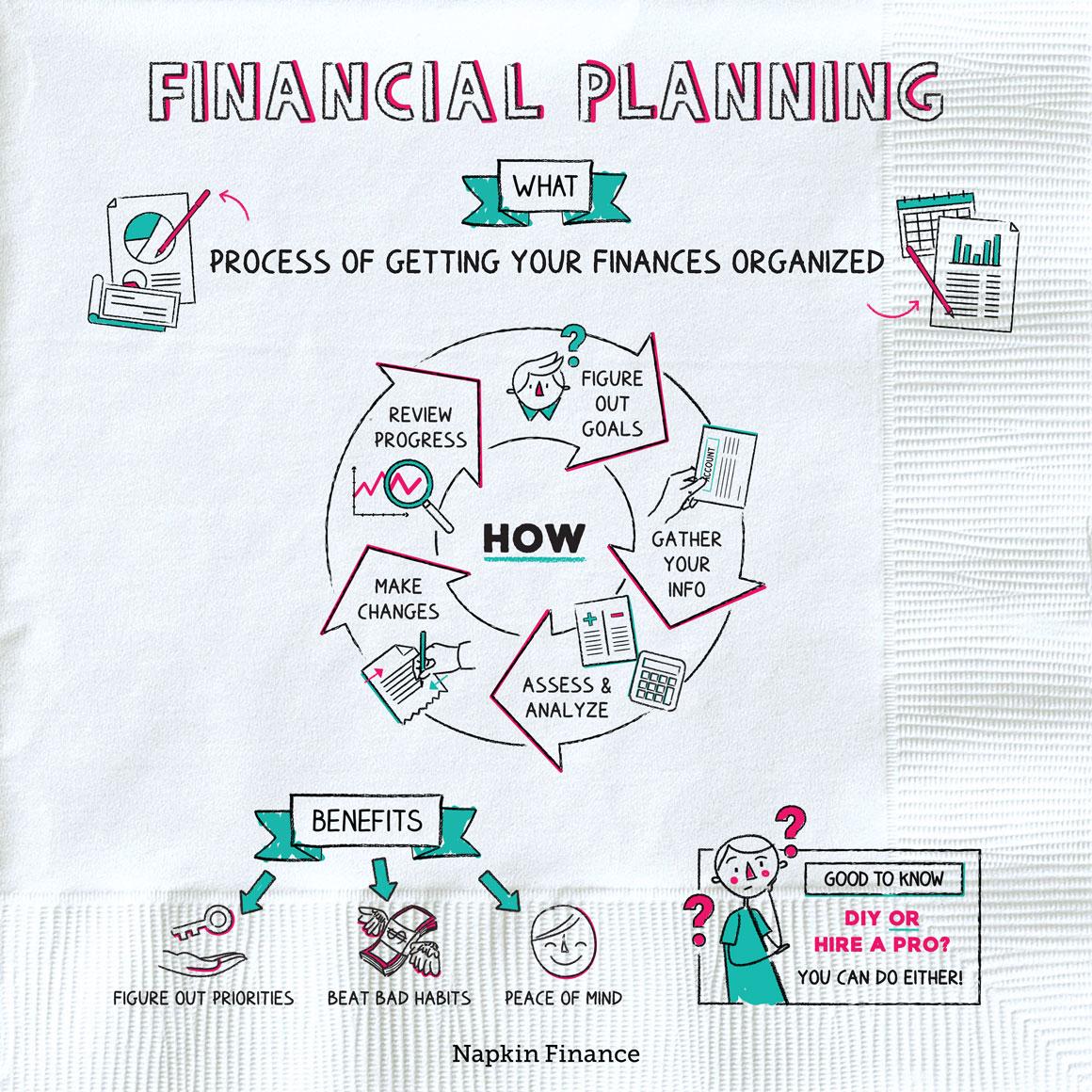
Financial Planning for Families
Achieving financial independence as a family requires a well-structured plan that caters to both current needs and future goals. Begin by establishing a family budget that encompasses essential expenses, savings, and discretionary spending. Consider the following key components when mapping out your financial strategy:
- Income sources: Analyze all potential income streams, including salaries, investments, and side gigs.
- Emergency fund: Aim to save at least three to six months’ worth of living expenses.
- Debt management: Prioritize paying off high-interest debts while making regular payments on others.
- Investing for the future: Explore options like retirement accounts and educational savings accounts for children.
Once your budget is in place, focus on long-term financial goals. Establish objectives such as home ownership, children’s education, or travel experiences. This can be facilitated by using a simple goals tracking table:
| Financial Goal | Target Amount | Timeframe |
|---|---|---|
| Home Down Payment | $50,000 | 5 years |
| Children’s College Fund | $100,000 | 10 years |
| Family Vacation Fund | $15,000 | 2 years |
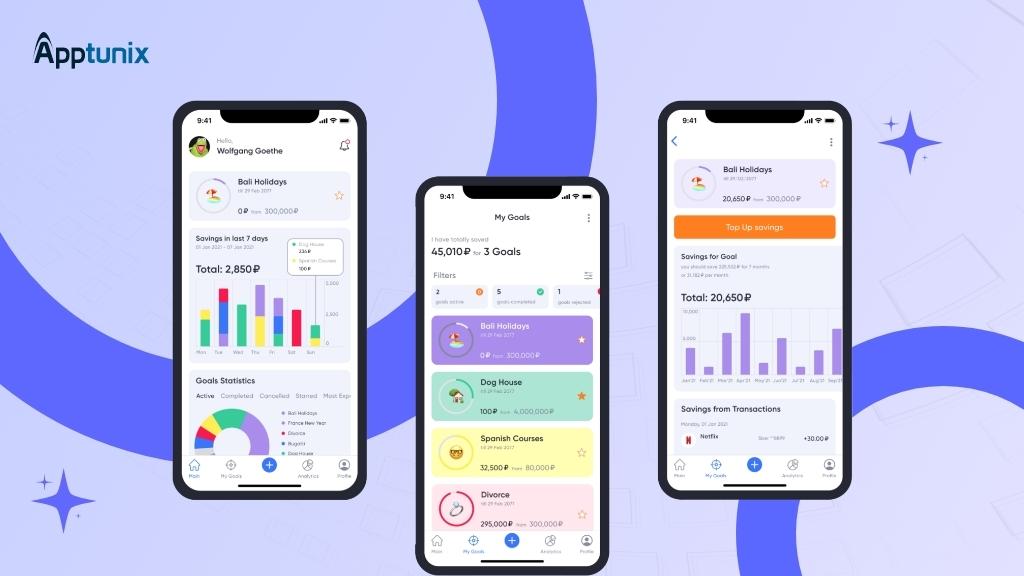
Personal Finance Apps
In the digital age, managing your finances has never been easier, thanks to a myriad of personal finance applications designed to suit various needs. From budgeting to investing, these apps empower users to take control of their financial journey. Some of the key features to look for in a financial app include:
- Budget Tracking: Tools that help you set, track, and analyze your spending habits.
- Expense Categorization: Automated systems to categorize and manage your expenditures seamlessly.
- Investment Insights: Real-time updates and tips for building and managing your investment portfolio.
- Goal Setting: Features that encourage setting and tracking specific financial goals, from saving for a vacation to retirement planning.
Many of these applications offer intuitive interfaces and valuable insights that can streamline your financial management process. Below is a comparison table of popular finance apps based on their primary strengths:
| App Name | Main Feature | Best For |
|---|---|---|
| Mint | Budgeting | Comprehensive Budgeting |
| YNAB | Expense Tracking | Proactive Budgeters |
| Acorns | Investing | Rounding Up Spare Change |
| Personal Capital | Wealth Management | Long-term Financial Planning |
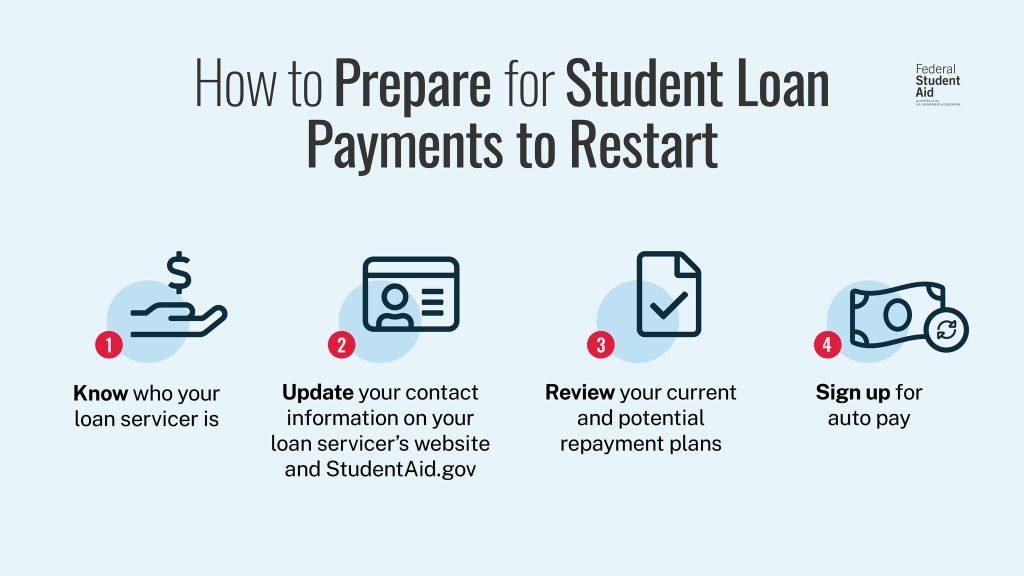
Student Loan Repayment
Managing student loans can often feel like navigating a maze, but with a clear strategy, you can emerge victorious. To pave your way to financial freedom, start by creating a robust repayment plan. Here are some key approaches to consider:
- Understand Your Loans: Familiarize yourself with interest rates, loan types, and repayment terms.
- Choose the Right Repayment Plan: Tailor your repayment strategy based on your financial situation; consider options like Income-Driven Repayment plans.
- Make Extra Payments: Whenever possible, make additional payments toward your principal to reduce interest costs over time.
Additionally, it helps to keep track of your progress and adjust your plans as needed. Set realistic goals to avoid feeling overwhelmed. Use tools like budgeting apps and loan calculators, making your payment journeys more manageable. Here’s a simple table to track your loan status:
| Loan Type | Principal | Interest Rate | Monthly Payment |
|---|---|---|---|
| Federal Direct Loan | $20,000 | 4.5% | $200 |
| Private Loan | $10,000 | 5.5% | $150 |
| Grad PLUS Loan | $15,000 | 6.3% | $180 |

Debt-Free Journey
Embarking on a journey to financial freedom often begins with shedding the weight of debt. This process is not just about paying off bills; it’s an opportunity to reshape your financial mindset and build a foundation for a secure future. Consider implementing strategies such as:
- Creating a budget: Track every dollar you earn and spend to identify areas for improvement.
- Snowball method: Focus on paying off the smallest debts first for quick wins and motivation.
- Negotiating with creditors: Many are willing to work with you to find a manageable solution.
As you progress, celebrating small victories along the way is essential. Set achievable milestones that keep you motivated and focused on your goals. Here’s a simple table that illustrates the importance of tracking your debt repayment progress:
| Milestones | Target Date | Status |
|---|---|---|
| Pay off credit card 1 | March 2024 | In Progress |
| Pay off credit card 2 | June 2024 | Not Started |
| Emergency fund of $1,000 | August 2024 | Not Started |

Credit Card Management
Effective plays a crucial role in achieving financial independence. It’s not just about keeping your debt in check; it’s about leveraging credit as a tool to build a stronger financial future. Here are some key strategies to consider:
- Pay your balance in full: Avoid the pitfalls of interest charges by making it a habit to pay off your balance every month.
- Use rewards wisely: Choose cards that offer rewards that align with your spending habits, whether that’s travel points, cash back, or other perks.
- Monitor your credit score: Regularly check your score to ensure that your credit management efforts are paying off.
- Limit the number of cards: Having too many credit cards can complicate your finances. Focus on a few that offer the best benefits.
Furthermore, understanding your credit utilization ratio—a measure of how much credit you use compared to your total available credit—is essential. A low utilization rate indicates responsible credit management, while a high rate can negatively impact your credit score. Consider the following table for a quick overview of optimal utilization rates:
| Credit Utilization Rate | Impact on Credit Score |
|---|---|
| Below 30% | Excellent |
| 30% – 50% | Good |
| Above 50% | Poor |
| Above 80% | Very Poor |
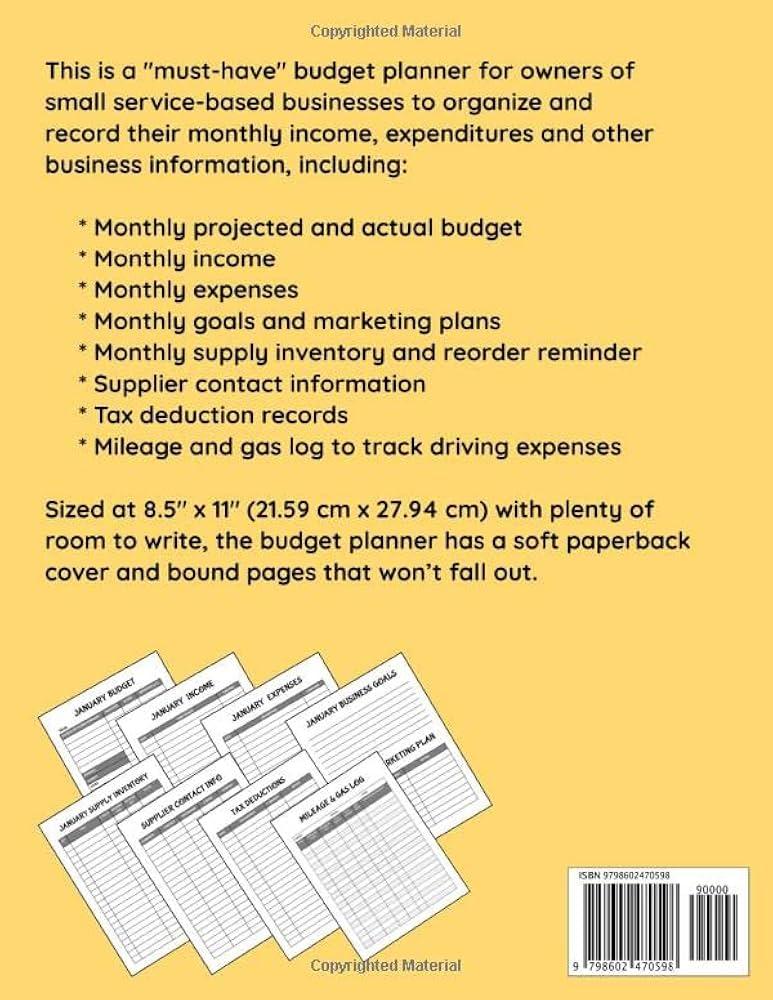
Budgeting for Freelancers
For freelancers, establishing a solid budgeting strategy is essential for sustainable financial health. One of the first steps is to track all income sources. Unlike traditional employees with a predictable paycheck, freelancers might juggle various projects, which can lead to fluctuating monthly earnings. To navigate this, create a comprehensive list that includes all potential income streams such as:
- Client payments
- Retainer fees
- Passive income from digital products
- Affiliate marketing profits
Next, meticulously plan for expenses to ensure all bases are covered. Freelancers often incur various operational costs that need to be accounted for in your budget. These may consist of:
- Software subscriptions
- Office supplies
- Marketing and advertising
- Professional development courses
Designing a table to visualize this can simplify the budgeting process:
| Income/Expense Item | Estimated Monthly Amount |
|---|---|
| Client Payments | $2,500 |
| Retainer Fees | $1,000 |
| Software Subscriptions | $200 |
| Office Supplies | $100 |
| Marketing | $150 |
Regularly revisiting and adjusting this budget will help freelancers not only predict earnings but also prepare for potential financial fluctuations. Prioritizing savings and having an emergency fund can further fortify your financial foundation and ensure long-term success in the freelancing landscape.

Frugal Living Tips
Embracing a lifestyle rooted in frugality is an empowering choice that can propel you toward financial independence. By making conscious decisions about your spending, you can allocate more funds towards savings and investment, fostering your long-term wealth. Here are some effective strategies you can incorporate into your daily life:
- Meal Planning: Craft a weekly meal plan to reduce food waste and curb impulsive dining out.
- Buy in Bulk: Purchase non-perishable items in bulk to capitalize on discounts and reduce the cost per unit.
- DIY Projects: Embrace your inner handyman or craftsperson to complete home projects and repairs without incurring costly labor fees.
- Utilize Community Resources: Explore local libraries for books, free events, and workshops that enrich your knowledge and skills.
Another significant area where savings can be maximized is through efficient budgeting. A well-structured budget not only keeps your spending in check but also helps you identify areas where you can trim excess costs. Consider creating a monthly budget table to track your expenses and savings goals:
| Expense Category | Budgeted Amount | Actual Amount |
|---|---|---|
| Rent/Mortgage | $1,200 | $1,200 |
| Groceries | $300 | $250 |
| Utilities | $150 | $140 |
| Transportation | $200 | $180 |
| Savings | $400 | $450 |

Side Hustles for Extra Income
Unlocking avenues for additional income can significantly boost your journey towards financial independence. Whether you’re looking to pay off debt, save for a big purchase, or simply build a financial safety net, there are various side hustles to explore. Consider turning your hobbies into profit by engaging in activities such as freelancing, where you can offer your skills online, or selling handmade crafts through platforms like Etsy. Real estate investing, even on a small scale, can also be a lucrative option; think about renting out a spare room or utilizing platforms like Airbnb.
To simplify your options, here’s a brief overview of some popular side hustles:
| Side Hustle | Description |
|---|---|
| Online Tutoring | Teach a subject you excel in via video calls. |
| Delivery Services | Work with food or package delivery apps on your schedule. |
| Blogging/Vlogging | Create content around your passion and monetize through ads. |
| Pet Sitting/Dog Walking | Look after pets for busy owners in your community. |
These opportunities not only provide potential financial rewards but also open paths to skills and experiences that can enhance your main career. The beauty of side hustles lies in their flexibility; you can choose your hours, work from anywhere, or even build something you genuinely love. Embracing the idea of diversifying your income sources could lead not just to financial stability, but also to a life freer from financial stress.
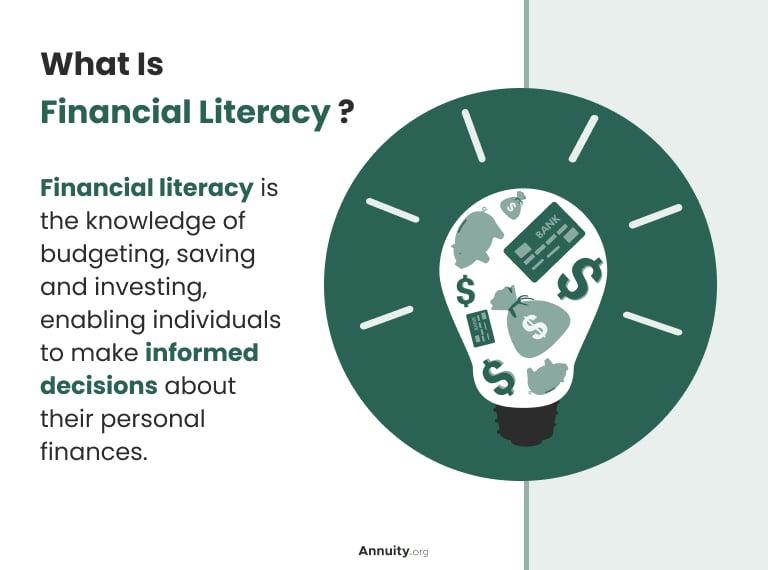
Financial Literacy Education
Understanding personal finance is a crucial step towards achieving freedom in your financial journey. By grasping essential concepts and skills, you empower yourself to make informed decisions that can lead to sustainable wealth and security. To fully embrace this knowledge, focus on the following key areas:
- Budgeting: Create and maintain a budget to track income and expenses effectively.
- Saving: Establish an emergency fund and save for future goals.
- Investing: Learn the basics of investing in assets that can appreciate over time.
- Debt Management: Understand how to manage debt wisely and avoid pitfalls.
One effective way to strengthen your financial understanding is through structured education. Workshops, online courses, and even community seminars offer valuable resources to hone your skills. Consider leveraging the following options:
| Resource Type | Example | Focus Area |
|---|---|---|
| Online Course | Coursera | Comprehensive Financial Planning |
| Local Workshop | Community Center | Budgeting Basics |
| Webinar | Financial Experts | Investing Fundamentals |

Insurance Planning
When planning for a secure financial future, the importance of adequate insurance coverage cannot be understated. Having the right insurance policies in place serves as a solid foundation, helping to protect against unforeseen events that could derail your journey toward independence. Key insurance types to consider include:
- Life Insurance: Provides financial support to your loved ones in the event of your passing.
- Health Insurance: Covers medical expenses and ensures access to necessary healthcare services.
- Disability Insurance: Protects your income if you are unable to work due to illness or injury.
- Property Insurance: Safeguards your home and belongings against damage or loss.
Each of these policies plays a crucial role in offering financial security and peace of mind. To illustrate the potential financial implications of being underinsured, consider the following table that outlines estimated costs associated with various life-changing events:
| Event | Estimated Cost | Insurance Coverage Recommended |
|---|---|---|
| Major Medical Emergency | $10,000+ | Health Insurance |
| Home Damage Due to Natural Disaster | $20,000+ | Property Insurance |
| Loss of Income Due to Illness | $30,000 (average annual salary) | Disability Insurance |
| Dependents Losing a Breadwinner | $500,000+ (average life insurance need) | Life Insurance |

Long-Term Wealth Building
Building wealth is a journey that often extends beyond immediate financial gains, requiring a strategic approach that integrates both patience and informed decision-making. Investing in diversified assets such as stocks, bonds, real estate, and mutual funds can serve as a foundation for lasting financial independence. By adopting a disciplined savings plan, individuals can steadily allocate a portion of their income toward these investments, allowing wealth to accumulate exponentially over time. Consider implementing the following strategies:
- Consistent Savings: Set aside a specific percentage of your income monthly.
- Automatic Investments: Utilize investment apps or robo-advisors for seamless contributions.
- Reinvest Earnings: Let dividends and interest compound rather than cashing out.
- Tax-Advantaged Accounts: Maximize contributions to IRAs or 401(k)s for retirement savings.
Another crucial element of long-term wealth is education and awareness. Understanding market trends, economic shifts, and personal finance principles empowers individuals to make informed decisions. Regularly reviewing and adjusting your investment portfolio is essential to reflect changing goals or market conditions. A helpful way to track your progress is through the following simplified table:
| Investment Type | Risk Level | Typical Return |
|---|---|---|
| Stocks | High | 7-10% |
| Bonds | Medium | 3-5% |
| Real Estate | Medium | 5-8% |
| Mutual Funds | Varies | 4-6% |

Saving for College
Investing early and strategically in a college fund can make a world of difference for a future student. The journey toward financial independence can begin with simple steps that not only ease the burden of higher education costs but also instill wise spending habits. Here are a few effective strategies to consider:
- Open a 529 College Savings Plan: A tax-advantaged investment account designed specifically for education expenses.
- Automatic Transfers: Set up monthly contributions to seamlessly build your savings over time.
- Research Scholarships: Stay informed about available scholarships and grants to potentially reduce the overall education costs.
By exploring various savings methods and consistently contributing, you can cultivate a robust financial foundation. It’s also important to regularly review and adjust your savings goals to reflect any changes in tuition rates or educational aspirations. Here’s a brief overview of potential savings growth over a period of five years:
| Year | Annual Contribution | Estimated Total Savings |
|---|---|---|
| 1 | $1,000 | $1,500 |
| 2 | $1,000 | $3,100 |
| 3 | $1,000 | $4,700 |
| 4 | $1,000 | $6,300 |
| 5 | $1,000 | $8,000 |

Estate Planning
When considering a future marked by financial independence, the importance of thorough planning cannot be overstated. Incorporating into your financial strategy not only safeguards your assets but also ensures your wishes are honored after your passing. Key elements to contemplate include:
- Wills and Trusts: Define how your assets will be distributed.
- Power of Attorney: Appoint a trusted individual to manage your finances if you’re unable.
- Healthcare Directive: State your medical wishes for end-of-life care.
Additionally, the creation of a comprehensive estate plan can facilitate a smoother transition for your heirs, minimizing stress during an emotionally challenging time. A well-structured approach can also help in tax planning and protecting your estate from unnecessary taxes and fees. Consider the benefits of periodic reviews to ensure your estate plan remains aligned with your evolving financial landscape. Below is a simplified overview:
| Aspect | Importance |
|---|---|
| Asset Distribution | Ensures your desires are realized. |
| Tax Efficiency | Minimizes tax liabilities for your heirs. |
| Family Protection | Helps resolve potential disputes. |
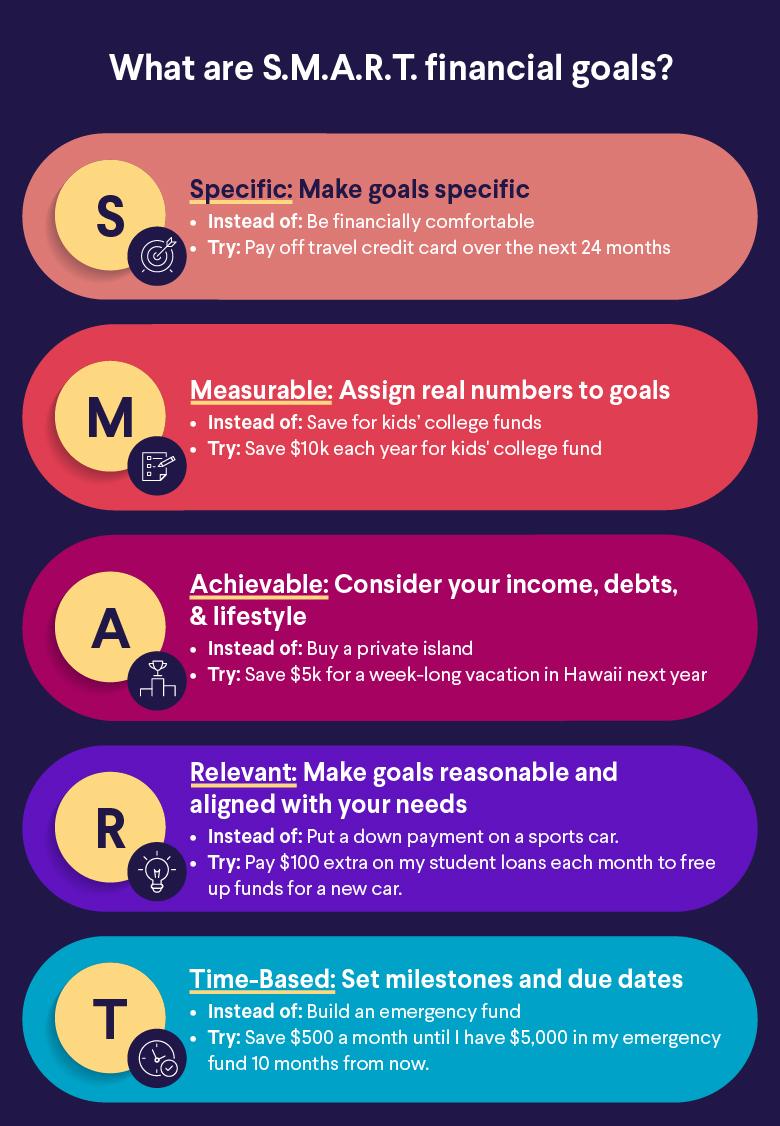
Financial Goals Setting
Setting financial goals is the roadmap to achieving true financial independence. It’s essential to establish clear and actionable objectives that serve as a guidepost in your financial journey. Consider breaking down your goals into short-term and long-term components to maintain focus and motivation. Here are some key goal categories to consider:
- Emergency Fund: Aim to save 3 to 6 months’ worth of expenses.
- Debt Repayment: Identify high-interest debts and create a structured repayment plan.
- Retirement Savings: Contribute regularly to retirement accounts to ensure comfort in later years.
- Investment Goals: Set targets for diversifying your investment portfolio.
Creating SMART (Specific, Measurable, Achievable, Relevant, Time-bound) goals can significantly enhance your financial planning. When you articulate your ambitions in a structured way, you can track your progress and celebrate achievements along the way. Consider this simple table to visualize your goals:
| Goal | Target Amount | Timeframe | Progress |
|---|---|---|---|
| Emergency Fund | $15,000 | 12 months | 60% to goal |
| Debt Repayment | $5,000 | 8 months | 40% to goal |
| Retirement Savings | $50,000 | 10 years | 20% to goal |
| Investment Portfolio | $30,000 | 5 years | 30% to goal |

Money Management for Couples
Managing finances as a couple can be both rewarding and challenging. Open communication is essential; partners should regularly discuss their financial goals and priorities. Consider creating a joint budgeting system that accounts for individual expenses while also setting aside funds for shared experiences. This approach fosters a sense of teamwork and helps both partners feel involved in their journey toward financial independence. Some key steps include:
- Setting Clear Financial Goals: Define short-term and long-term objectives together.
- Creating a Budget: Outline monthly income and expenses that reflect both partners’ needs and desires.
- Engaging in Regular Financial Check-Ins: Schedule monthly discussions to assess progress and adjust plans as needed.
Additionally, consider designating specific roles based on each person’s strengths and interests. One partner might handle day-to-day expenses while the other manages investments and savings. This division of responsibility not only enhances efficiency but also enables each individual to contribute positively toward their financial future. A simple table can assist in tracking these roles:
| Partner | Responsibilities |
|---|---|
| Partner A | Daily expenses and budgeting |
| Partner B | Investments and long-term savings |

Family Budgeting
Creating a family budget is essential for achieving financial independence. It serves as a roadmap for families to guide their spending, saving, and investments. Begin by tracking your income and expenses, ensuring you have a comprehensive view of where money goes each month. A solid budget breaks down both fixed expenses, like rent or mortgage, and variable costs, such as groceries and entertainment. Consider organizing the budget into categories to make it easier to manage:
- Housing – mortgage/rent, utilities
- Groceries – food, household supplies
- Transportation – gas, maintenance
- Entertainment – dining out, hobbies
- Savings – emergency fund, education
Once you have your budget laid out, the next step is sticking to it. Regularly review your spending patterns and adjust the budget as necessary to ensure alignment with your financial goals. To reinforce disciplined habits, set specific savings targets, such as allocating a portion of your income to savings or debt repayment. A practical method to track your progress is through a simple table, which can help visualize how well you are adhering to your budget:
| Month | Income | Expenses | Savings |
|---|---|---|---|
| January | $4,000 | $3,100 | $900 |
| February | $4,200 | $3,200 | $1,000 |
| March | $4,500 | $3,350 | $1,150 |

Smart Spending Habits
Adopting thoughtful spending habits is a game changer on the road to financial independence. By making deliberate choices about where your money goes, you can build savings, invest wisely, and buffer against unexpected expenses. Here are some strategies to consider:
- Budgeting: Create a clear budget that outlines your income and expenses, helping you to track your financial health.
- Needs vs. Wants: Distinguish between essential purchases and discretionary spending, prioritizing your needs.
- Impulse Control: Implement a 24-hour rule before making any non-essential purchases to avoid regret later.
- Shop Smart: Utilize coupons, discounts, and compare prices online to ensure you get the best deals.
Moreover, it’s crucial to cultivate habits that encourage long-term wealth-building. Consider the following practices to enhance your financial literacy and decision-making:
| Practice | Benefit |
|---|---|
| Automated Savings | Consistently saving without effort fosters financial stability. |
| Investing Early | Compound interest can significantly increase wealth over time. |
| Continuous Learning | Staying informed about financial trends enables better investment choices. |
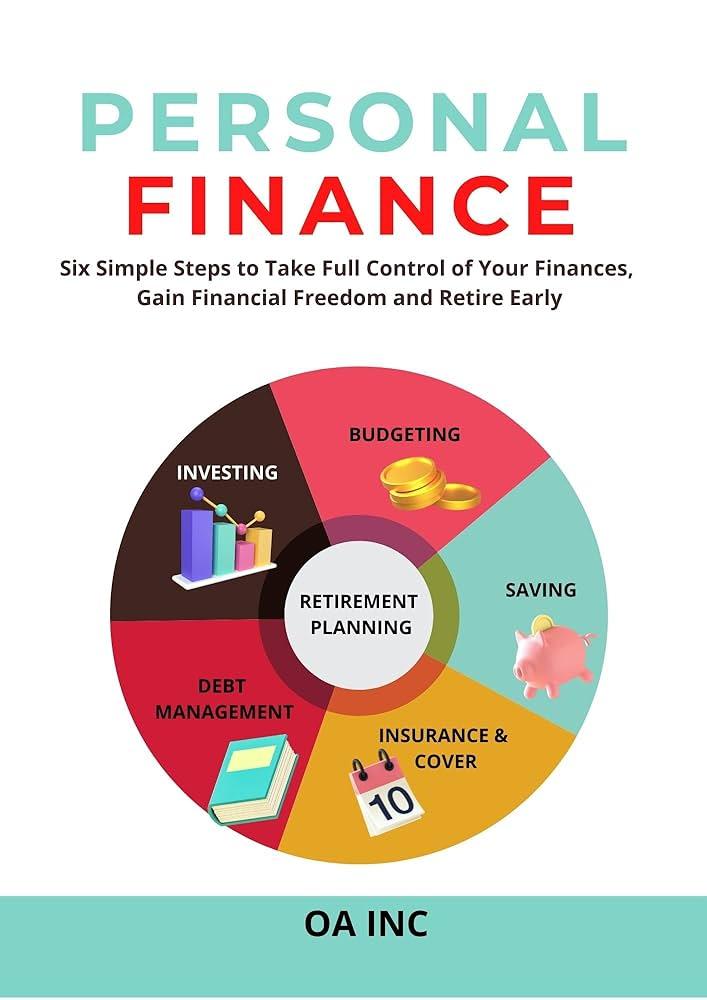
Personal Finance for Millennials
Achieving financial independence is not merely a dream; it’s an attainable goal that requires strategic planning and disciplined execution. For millennials, whose financial landscapes are shaped by student loans, rising living costs, and an unpredictable job market, the journey to independence involves a few critical steps. First, the importance of budgeting cannot be overstated. Creating a monthly budget helps track income and expenses, ensuring that every dollar is utilized effectively. Additionally, investing in financial literacy is crucial. Understanding the basics of investment options, interest rates, and credit scores can empower individuals to make informed decisions that pave the way for long-term wealth accumulation.
Another key aspect of this journey is saving strategically. Setting aside a portion of income in high-yield savings accounts or exploring retirement accounts like IRAs or 401(k) plans can lead to significant financial growth over time. Timerelative goals, such as saving for an emergency fund or targeting a specific amount for retirement, can keep individuals motivated. Here’s a simple breakdown of suggested savings allocations to help prioritize financial goals:
| Financial Goal | Suggested Monthly Contribution |
|---|---|
| Emergency Fund | $200 |
| Retirement Savings | $300 |
| Debt Repayment | $150 |
| Investments | $100 |
By prioritizing savings and making educated decisions about spending, millennials can gradually build their path toward financial independence. Now is the perfect time to redefine what success looks like outside conventional standards—as personal goals evolve, so too can the understanding of wealth and financial freedom.

Wealth Preservation Strategies
In today’s rapidly evolving economic landscape, preserving wealth is as important as accumulating it. Maintaining the integrity of your assets requires a proactive approach, where diversification plays a crucial role. By distributing investments across various asset classes—such as real estate, equities, bonds, and precious metals—you can mitigate risks associated with market volatility. This strategy not only safeguards your capital but also positions you for potential growth opportunities across different sectors.
Another effective tactic involves leveraging legal instruments to protect your wealth from unforeseen circumstances. Utilizing trusts, wills, and insurance policies can shield your assets from creditors and ensure they are passed on according to your wishes. Additionally, engaging in estate planning is vital; it helps you streamline your wealth transfer process while minimizing tax liabilities. Consider creating a simple overview of your current financial landscape:
| Asset Class | Percentage Allocation |
|---|---|
| Real Estate | 30% |
| Stocks | 40% |
| Bonds | 20% |
| Precious Metals | 10% |
To Conclude
In the pursuit of financial independence, we embark on a journey that transcends the mere accumulation of wealth. It’s about crafting a life where choices abound, free from the constraints that often bind us to traditional employment paths. The road may be paved with challenges, but each calculated step brings us closer to a realm where our passions flourish and our time is our own.
As we close this chapter on financial independence, remember that the true essence lies not just in the numbers, but in the freedom they afford us to live authentically. Whether you’re just beginning or well on your way, the quest for financial autonomy is a personal odyssey—one that invites exploration, learning, and growth. Embrace the journey ahead, for the possibilities are as limitless as the horizon.
financial independence is not a destination; it’s a continual evolution, an ever-unfolding narrative that we write with each decision we make. So go forth, with wisdom and courage, to shape the life you envision—your future awaits.


